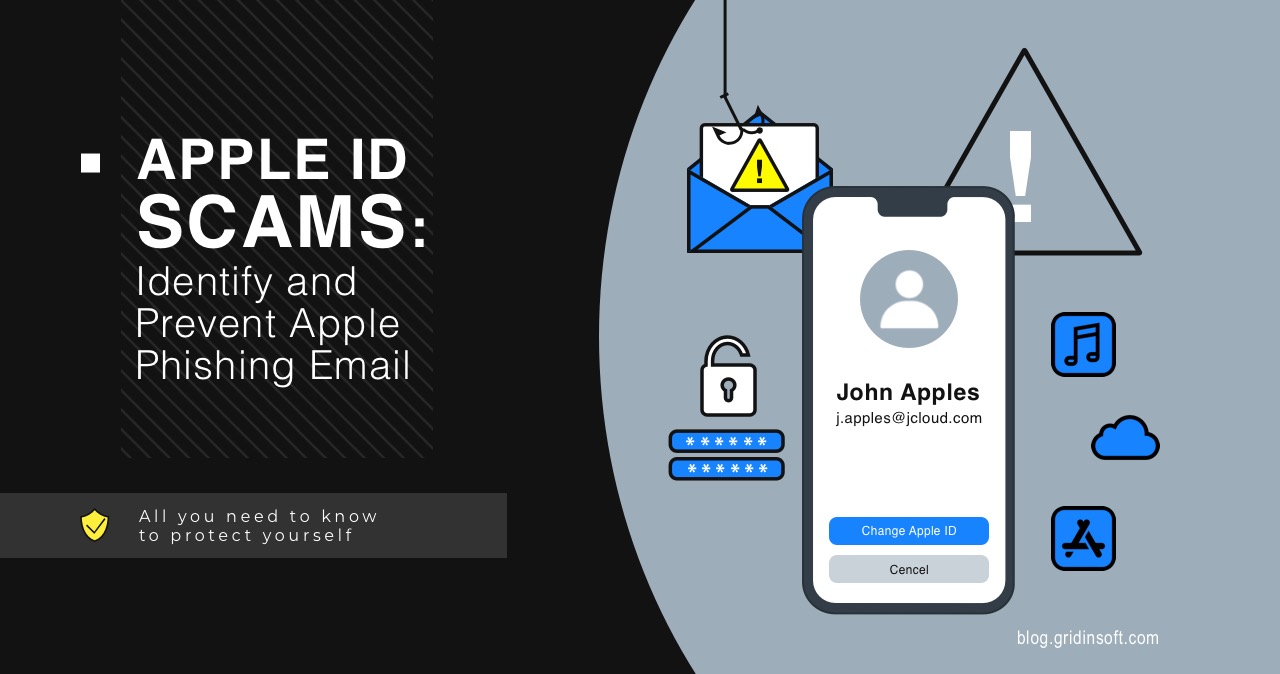Apple users are believed to be protected from all sorts of fraud and hacking. That’s because Apple designs its technologies with all required privacy and security requirements. But alas, fraudsters have come up with methods of penetration into users’ personal space and know how to make them give their data. This article will tell you the main facts about Apple ID scams and how to deal with it.
What is an Apple ID phishing scam?
Phishing is a method actors use to con people out of their data. This often includes passwords, social security numbers, and banking information. Phishers try to get this information so they can sell it for a hefty sum, or use it in more advanced scams. For example, imposters posing as Apple will ask for information in messages that appear legitimate. They lead you to a fake website that looks precisely like apple.com and then collect any data entered. Phishers use your Apple ID to access Apple services such as Apple Music, the App Store, and iCloud.
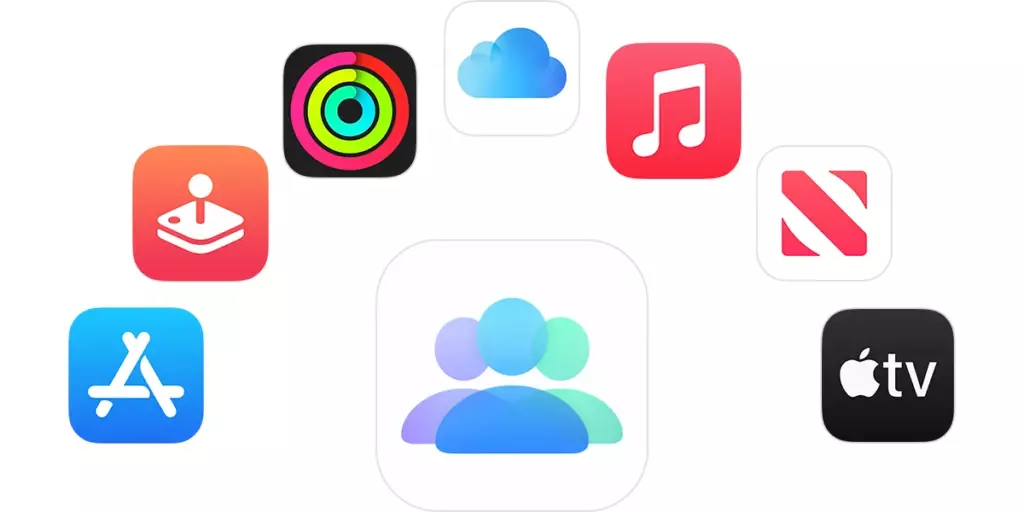
Why do scammers target your Apple ID?
Once they have access, they can use the stolen information to impersonate a legitimate user on the services they abused. Anyone posing as a scammer can access your Apple ID credentials, which allows them to access your personal information like addresses and banking information. Giving someone access to this information through an iCloud breach is risky because they can inspect your files, documents, and photos in your history. Scammers rely on finding private information or media they can use to extort money from you. Another way for money extortion is blocking your devices through FindMy service. If you have several devices linked to the hacked account, it could be pretty painful.
Types of Apple ID phishing scams
Apple ID hackers constantly develop new ways to scam people and earn money. People easily fall prey to new scams as previous methods are revealed and debunked. This ongoing process makes keeping the public safe difficult. So, lets review the main types of Apple ID scams:
1. Apple ID receipt email
Apple ID phishing email with an attached Apple ID receipt claims to be from Apple. The email says that someone bought something using the recipient’s Apple ID. To make the email trick more believable, additional information can be included in the body of the email, such as a zip file or a hyperlink to sign in to your Apple ID. Once opened, the fake receipt will capture your personal information and store it in perpetuity. When an Apple phishing email appears in your inbox, it suggests that you have been locked out of your account.
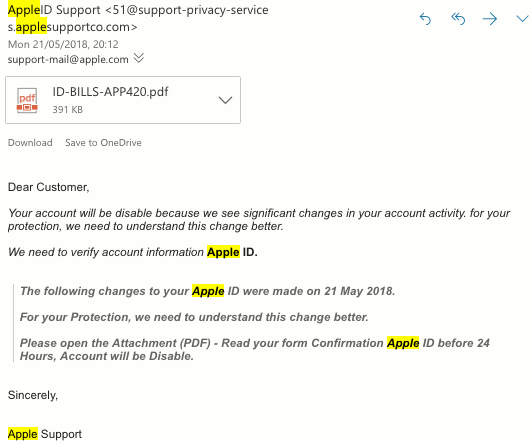
2. Disabled Apple account notification
This is a common tactic of cybercriminals who use phishing scams. A decoy website link often comes attached to this email. If the scammer hopes you’ll follow the link and try to access your account, they can get your password by logging in themselves.
3. Apple ID text scams
To trick people, scammers use many different forms of phishing. For example, they might send you a text message your Apple ID has been locked or warn you that a fake text message was just sent to your phone. Scammers use this technique to create panic and confusion in their victims. In addition, they use deceptive statements that confuse them, such as links to fake websites that ask you to input information or contact them by phone.
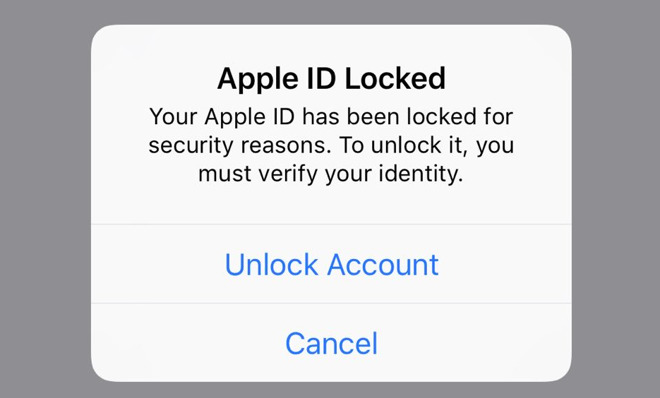
4. Apple ID phone call scams
Fake Caller ID allows con artists to disguise their name and logo as Apple’s real ones. This makes their scams seem even more accurate to the victim. Confident threat actors convince people easily through phone scams. This makes it harder for someone to notice they are being scammed. When receiving a call from a scammer, disconnect the call and dial Apple’s official support line. Once on the phone, inquire if they just called you.
5. App store pop-up asking for your password
App Store pop-ups appear periodically when you interact with your phone, so entering your password when prompted feels natural. However, this can be dangerous if scammers manage to send you pop-ups directly. Moreover, they can just counterfeit a legit system push notification, so watch out and think if you really need to type the password at the moment.
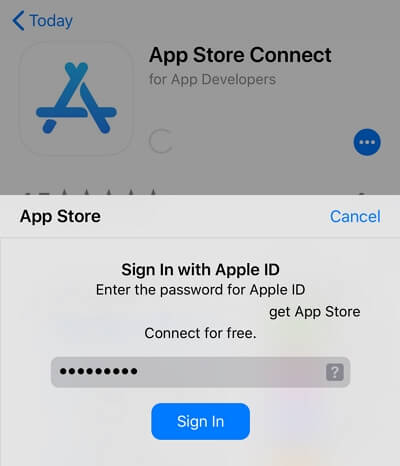
6. Fake calendar invitation
When you receive an unexpected invitation or email, the best thing to do is take a moment to analyze the invitation. Calendar virus malware is a form of attack that infects Apple devices, specifically iPhones and iPads. This malicious software allows hackers to add fake subscribed calendar accounts to a victim’s device without their authorization. This allows them to create notifications for “events” that include malicious links. Common terms for this type of malware include “iCalendar spam” and “iPhone calendar spam”.
7. iPhone locked
Scammers will often try to register your phone as lost, enable the Find My iPhone setting, and threaten to lock you out of your phone unless you pay them to relinquish control of your device.
How to identify an Apple ID scam?
To understand where the problem comes from, you need to pay attention to some things that appear on your PC. Here is a list of some of them:
- Unusual email senders– Apple’s team will come up with a more professional email address. Even similarly looking [email protected] is not an option. However, crooks rarely strain so hard, and often use some generic emails.
- Typos– “Hello friend, we come with bad news” either Apple has lowered the bar on copywriting significantly, or you’ve caught a liar. Pay close attention to spelling mistakes, grammatical errors, or incorrect spaces to identify potential scam messages.
- URL shorteners– If the links you receive do not lead you directly to the official site of apple.com, then do not trust the source that sends you these links. Moreover, do not follow this link.
- Urgency – fraudsters often like to escalate the situation. They often call users for urgent action. If you notice something suspicious in the message, such as the sender trying to make you respond quickly, do not respond to this.
- Verify requests– Apple employees will never ask for your personal information. If someone asks you personal questions about your social security number or credit card, don’t join the conversation.
- Generic greetings– Apple saves your name and uses it to refer to you when contacting you. If you are called sir/madam/friend in a message, the message is most likely a scam.
Top tips on how to identify and prevent an Apple ID scam
The best thing you can do to protect yourself is to follow ways to prevent fraud. If you are facing messages you cannot identify as legitimate, then it is best not to respond. In the end, follow the following tips to help reduce the risk of becoming a victim of Scammers.
- Always check the URL
- Don’t use the same password for multiple websites update password regularly
- Install antivirus software on your device
- Keep your web browser up to date
- Make sure you have the latest version of the operating system
- Never share your Apple ID password with anyone

